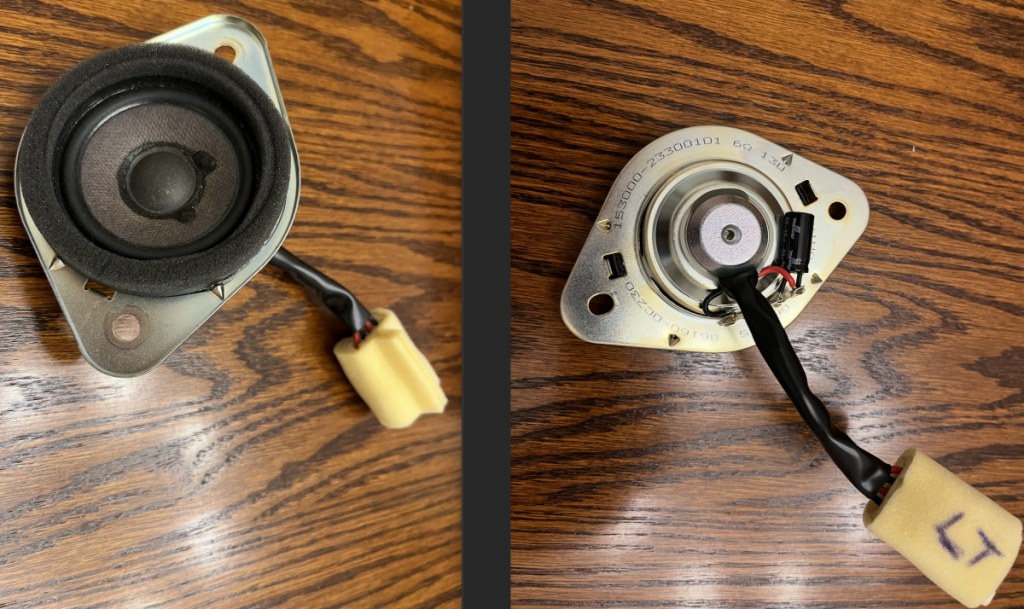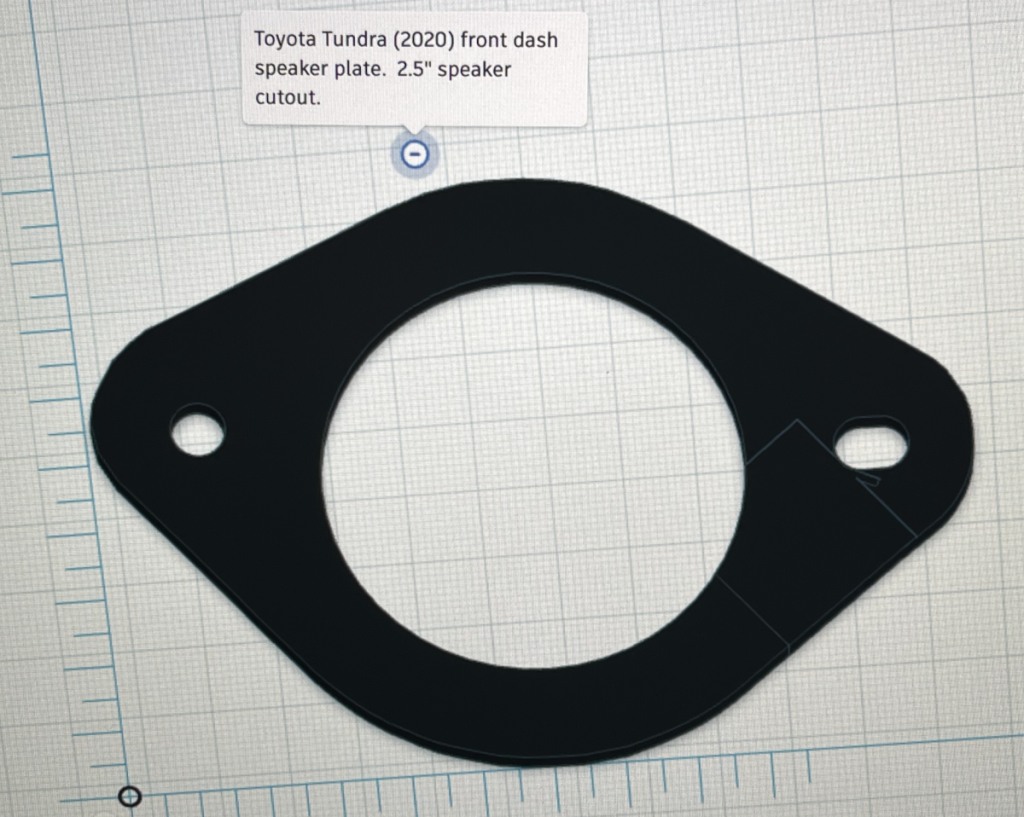Parts list and some more details:
All parts ordered from Parts Express unless noted...
- Peerless by Tymphany TC7FD00-04 2-1/2" Full Range Paper Cone Woofer 4 Ohm
- Dayton Audio PC68-4 2-1/2" Full-Range Poly Cone Driver (did not use this driver..... the Peerless driver sounded much better to me)
- Dayton Audio DMPC-33 33uF 250V Polypropylene Capacitor
- Audyn Cap Q4 0.1uF 400V MKP Metalized Polypropylene Foil Crossover Capacitor (wired parallel to the 33uF capacitor as a bypass)
- RED WOLF Car Dash Tweeter Speaker Wiring Harness for Select Toyota Tundra 2007-2021 (Amazon)
Here is a picture of the stock speakers:
(while Toyota calls this 2.75" speakers... the 2.5" speakers I ordered have exactly the same size cone diameter)

We traced the speaker frame and my son used Tinkercad to create the template. Print was made with a Bamboo printer:

Putting it all together... I used hot glue to secure the speaker to the frame template. Connections were all soldered and shrink wrapped. Sound has been way better than I hoped.